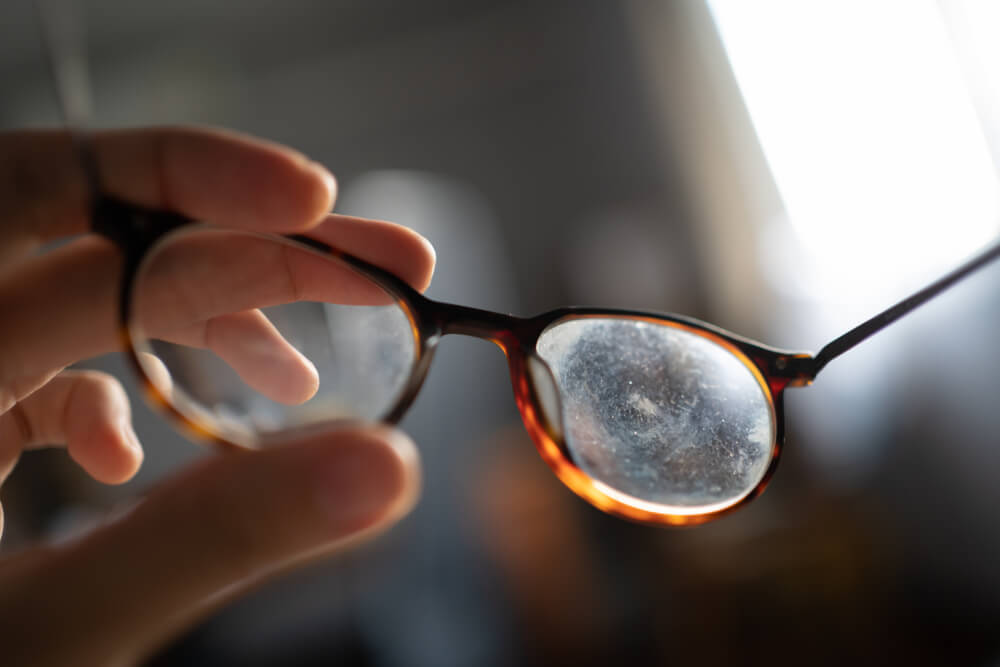What Are Crazed Lenses?
It's more often than not, not the easiest of tasks to find the perfect pair of glasses that fit all of your personal needs and preferences to suit your style, and help your eyes as much as possible… and when your beloved pair of glasses becomes a victim of wear and tear, it can send you into panic mode, (understandably so, the time involved to find the right pair, and cost of the repairs or replacements can seem daunting.).
A common form of wear and tear is something called ‘crazed lenses’… here’s how you can prevent this from happening, spot that it's occurring, how to fix the issue, and help you have a better understanding of what crazed lenses actually are.
Understanding Crazed Lenses
Crazed lenses, often referred to as "crazing," manifest as a network of fine cracks or lines on the surface of eyeglass lenses. These cracks can impair both the visual clarity and the aesthetic appeal of the glasses, leading to a less-than-optimal visual experience. Crazing is more commonly observed in plastic lenses, although it can also occur in other materials.

Causes of Crazing
Several factors contribute to the development of crazed lenses. Exposure to temperature extremes, frequent exposure to direct sunlight, and poor lens material quality are among the main culprits. Additionally, improper handling, like placing glasses lenses down on surfaces when not wearing them, dropping the glasses or cleaning them with abrasive materials, can accelerate the onset of crazing.
Preventing Crazed Lenses
Preventing crazed lenses starts with proper care and maintenance. Here are some effective measures to help prolong the life of your eyewear:
- Invest in Quality Lenses: Opt for high-quality lenses made by reputable manufacturers. These lenses are less prone to crazing due to better material and manufacturing standards.
- Handle with Care: Always handle your glasses gently. Avoid dropping them or placing them in situations where they could be exposed to excessive force.
- Store Properly: When not in use, store your glasses in a protective case. This shields them from environmental factors that can contribute to crazing.
- Avoid Extreme Temperatures: Try to avoid leaving your glasses in extreme temperatures, such as inside a hot car during summer or in a freezing environment during winter.
- Use Recommended Cleaning Methods: Clean your glasses using a microfiber cloth and lens cleaning solution. Avoid using abrasive materials, as they can scratch the lens surface. Check out our guide on how best to clean your glasses.
Spotting Crazed Lenses
Detecting crazed lenses is relatively straightforward. Hold your glasses up to a light source and carefully examine the lens surface. Look for fine lines, cracks, or irregular patterns. These may be more visible when light passes through the lenses.
Dealing with Crazed Lenses
If you've noticed crazing on your glasses, don't fret. Depending on the severity of the crazing, you have a few options:
- Professional polishing of the lenses: Consult a Professional, if the crazing is minor, they might be able to polish the lens surface to minimise the appearance of cracks.
- Replace the Lenses: In cases of significant crazing that impairs your vision or aesthetics, consider replacing the lenses. Your optician can guide you on the best lens replacement options.
- Upgrade Your Glasses: This might be a great opportunity to update your eyewear with a new pair that suits your style and visual needs.
Crazed lenses are never something that you set out to achieve, and can be such an inconvenience to your daily life, but with the right precautions you can prevent this from happening either for as long as possible, or even at all… and if it's already happened, this doesn’t mean it's game over for your beautiful specs, it might just mean the lens needs replacing rather than a whole new pair of glasses!
It's important to look after your glasses… after all, they look after you too!
Author: John Dreyer Optometrist Bsc(Hons), MCOPTOM, DipCLP
Created: 18 Oct 2023, Last modified: 7 Jan 2025

